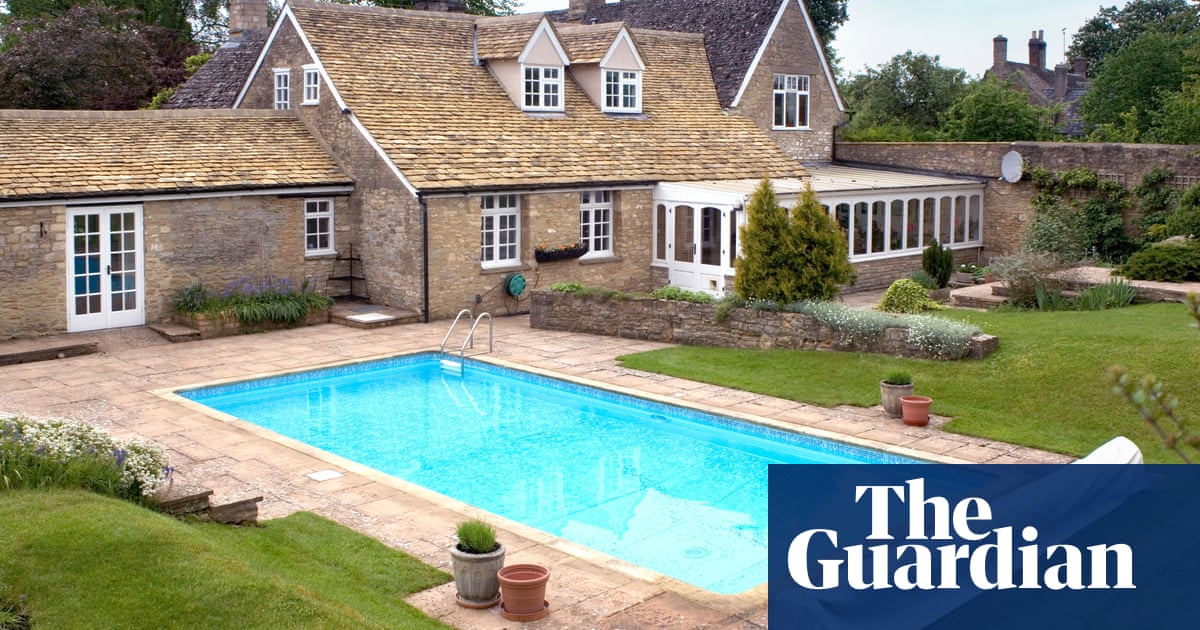Have you ever slept better in a hotel than at home, but are not sure why? Perhaps it’s the sheer fact of not being at home, surrounded by to-do lists – but according to these sleep, design and health experts, there’s a science behind a good night’s sleep.
From the size of your bed to the cotton of your sheets, to the clutter in your bedroom to the lighting in your bathroom, they share their tips and best buys for a great sleep, wherever you are.
Find the temperature sweet spot
The Hilton hotel chain has enlisted Dr Rebecca Robbins, assistant professor of medicine at Harvard medical school and associate scientist at Brigham and Women’s hospital, to help improve the sleep of its guests. An overheated room can interrupt deep sleep cycles as the body wakes to regulate temperature, so Robbins advises a strict temperature range of 18C to 20C at turndown: “We call this the ‘thermal neutral zone’ within which a person is not likely to sweat if they are too hot or shiver if they are too cold.”

Make space for sleep
One reason hotel beds are so comfy is their generous size, says Sarah Smith, CEO of Soak & Sleep, which supplies bedding and linen to boutique hotels as well as consumers. She cites research by the National Bed Federation, which found two adults sharing a double bed (135 x 190cm) have the same sleeping space in relative terms as a single baby in a cot. “A superking (180 x 200cm) is essentially the size of two singles – that is the space two individuals should really be sleeping in.”
Smith adds that a lot of hotels use zip and link mattresses (two single mattresses joined together, which can be separated to make twin beds) for practical reasons, but they also make the bed more comfortable because “each side has its own separate spring unit, so when you roll over you don’t disturb the person next to you”.
Dim the lights
At Premier Inn, corridors leading to rooms are lit with soft pools of light as “research suggests people behave more calmly than if it is brightly lit, and make less noise”, says the hotel chain’s head of product, Sarah Simpson. At the sleep-focused Zedwell hotel in Piccadilly Circus, guests enter the lobby from the street through a dark “transitional corridor”, designed to relax you after a day in the city. “We call it quiet design,” says the company’s head of hotels, Halima Aziz. “The idea is to encourage people to be calm by creating this hushed environment.”
A spring-based mattress is best – and don’t forget the topper
For spinal alignment, temperature regulation and overall comfort, the best option is a spring-based mattress, says Simpson. Robbins agrees because, unlike a foam structure, “the metal coils provide tremendous support while allowing for airflow”.
All good hotels also use mattress toppers, Simpson says. “The right one won’t disguise the mattress, but will add an extra layer of comfort.” Premier Inn uses toppers with a gel-infused layer designed to cocoon the body while “wicking away moisture” to keep you cool, says Simpson, while beds at the five-star Six Senses hotels have extra-thick organic toppers handmade in Devon using cashmere and wool, both of which have natural temperature-regulating properties.

Layer up your windows
Hotels use curtains to block light, muffle sound and make the room feel like a refuge from the outside world, says interior designer Ali Childs, who designed rooms at the chic Devon B&B Glebe House. To replicate this at home, introduce as many layers of window dressing as you can afford, ideally “a sheer curtain for privacy, a roman blind to block light and a pair of full-length curtains over the top”, says Childs.
Tom Thorogood, the co-head of interiors at hospitality design specialists Studio Moren, says that on all hotel projects (most recently Hyde London City) he specifies curtain tracks either recessed directly into the ceiling (so the top of the curtains sit flush with it) or hidden behind a pelmet, which is then Velcroed to the walls to prevent light leakage. Another detail is ensuring curtains overlap when they are drawn – installing a curtain track with an overlap arm will achieve this at home.
If you can afford it, buy Egyptian cotton
“The fibres are naturally longer so can be spun into a finer yarn, creating a softer piece of linen,” says Smith. For hotel-style bedding that balances durability with softness, she recommends 400-thread-count sheets with a sateen finish. “A sateen weave (as opposed to a percale) has a lot more yarn sitting on the face of the linen so it feels really soft; there is a lustre to it.” Ironing your sheets makes a difference, too. “Much of that ‘aaah’ feeling when you slip into a hotel bed is down to the pressed linen,” she adds.
Add a flat sheet
Another hotel trick is to layer an additional sheet underneath the duvet, which is folded over the top and tucked in under the mattress to create a “pocket” for you to slip into. Smith says the impact of this is partly psychological: “It makes the bed look opulent. Before you’ve even got in, you feel it’s going to be a nice experience.”
Match the pillow to your sleeping position
Pillow menus exist because there is no one-size-fits‑all pillow, says Robbins. Stomach sleepers (lying face down) will need very little support. “We recommend they sleep with hardly anything,” she says. Back sleepers need a pillow that supports their neck without lifting their head too high, while side sleepers should opt for a generous pillow that elevates the head so it aligns with the spinal column.
Streamline the middle-of-the-night loo trip
Amanda Al-Masri, VP of Wellness at Hilton, says the addition of low-level motion-sensor lighting in rooms means guests don’t have to switch on the main bathroom light at night. Try motion-activated under-bed lights for something similar.
And Childs likes to add a generous rug around the bed so guests’ feet touch something soft when they get in and out.

Get a large fabric headboard
For the signature “heavenly bed” at the Westin London City, Studio Moren designed overscaled fabric headboards to help muffle sound and make guests feel cocooned, says the design firm’s associate Ed Murray. “We would always suggest a fabric headboard in a hotel room, even on top of timber panelling, and a rug or fitted carpet, as they help control reverberation.”
The same design trick is used in luxury air travel to help guests nod off, says PriestmanGoode director Daniel MacInnes, who worked on first-class suites for Lufthansa and Qatar Airways. “Fabric padding in the area around the seat means you’ve got this soft wrap around you that stops you feeling like you’re in a plastic tub when you recline.” In Lufthansa’s first-class cabin, the “whole suite is wrapped in material so there are very few hard surfaces, and curtains in the entry muffle sound from outside”.

Try bamboo pyjamas
Six Senses hotels have a sleep wellness programme that offers guests pyjamas made from bamboo, which helps keep the body cool at night. “The material is naturally breathable, hypoallergenic, and maintains a temperature three degrees cooler than cotton, making it ideal for sensitive skin and comfortable sleep,” says the hotel group’s wellness pioneer, Anna Bjurstam. Try Nightire for organic bamboo sleepwear.
Avoid bare lightbulbs
“I don’t ever like to see a bare bulb in a hotel room,” says Childs, who advises that task lighting (such as spotlights) should be kept to the bathroom or dressing areas, with lamplight around the bed. She also avoids hard glass or metal pendants in the sleeping area, which can interrupt the feeling of softness. The latest Premier Inn room design has removed ceiling spotlights altogether in favour of LED uplights around the headboard, which bathe the ceiling in a warm glow. These “wash lights” are also used by airlines in business and first-class sections to give footwells and aisles a calm, ambient light that doesn’t disturb rest. “The effect is far more intimate and subdued than direct lighting,” says MacInnes.
Some LED lightbulbs produce a lot of blue daylight spectrum light, which can interrupt bedtime by suppressing the release of the sleep hormone melatonin. For this reason, Larry Traxler, senior VP of design at Hilton, recommends “choosing warmer red or yellow bulbs at the bedside at 2400 Kelvin colour temperature, which is closer to candlelight”.
Bathe (or shower) before bed
Hotel rooms with standalone tubs that encourage you to have a pre-bedtime soak can also help you drop off faster, says Robbins. “There is a decline in core body temperature at sleep onset, so a warm bath or shower before entering the cooler bedroom environment can accelerate this.”
Lull yourself to sleep with sound
Chenot Palace Weggis in Switzerland has a sleep cycles programme where guests check into “sleep rooms” with walls coated in noise-absorbing fibreglass, and a sequence of sounds is played at a frequency of 5Hz. These “binaural beats” (sound in the 5-8Hz range) promote relaxation and calmness, helping the brain transition into deeper sleep, says the Chenot group’s chief operating and science officer, Dr George Gaitanos. The myNoise app has a range of customisable binaural beats that support sleep.
Get a pre-bed hit of bergamot
Most hotels avoid a standard in-room fragrance as it can be divisive, says Al-Masri, but common areas are often scented to promote relaxation. The Zedwell hotel lobby smells of lavender, bergamot and ylang-ylang, as studies show all three support a good night’s sleep. Rather than filling your bedroom with fragrance, Robbins recommends massaging a small amount of sleep-focused aromatherapy oil into your temples before bed.

Reduce visual clutter
“Just 10 years ago, you’d walk into a hotel room and there would be paper and stuff everywhere,” says Al-Masri. “We try to minimise that now.” With research showing a cluttered bedroom has an impact on sleep quality, zoning the dressing and sleeping areas like a hotel room can create a more restful environment. At the Zedwell hotel the rooms designed by Neri&Hu follow a simple Japanese aesthetic, with beds positioned in bare, oak-lined “cocoons” so there is nothing in your eyeline when you nod off. “We’ve tried to strip back anything that could distract you from sleep. Controversially, that includes getting rid of TVs,” says Aziz.

.png) 2 months ago
43
2 months ago
43













































